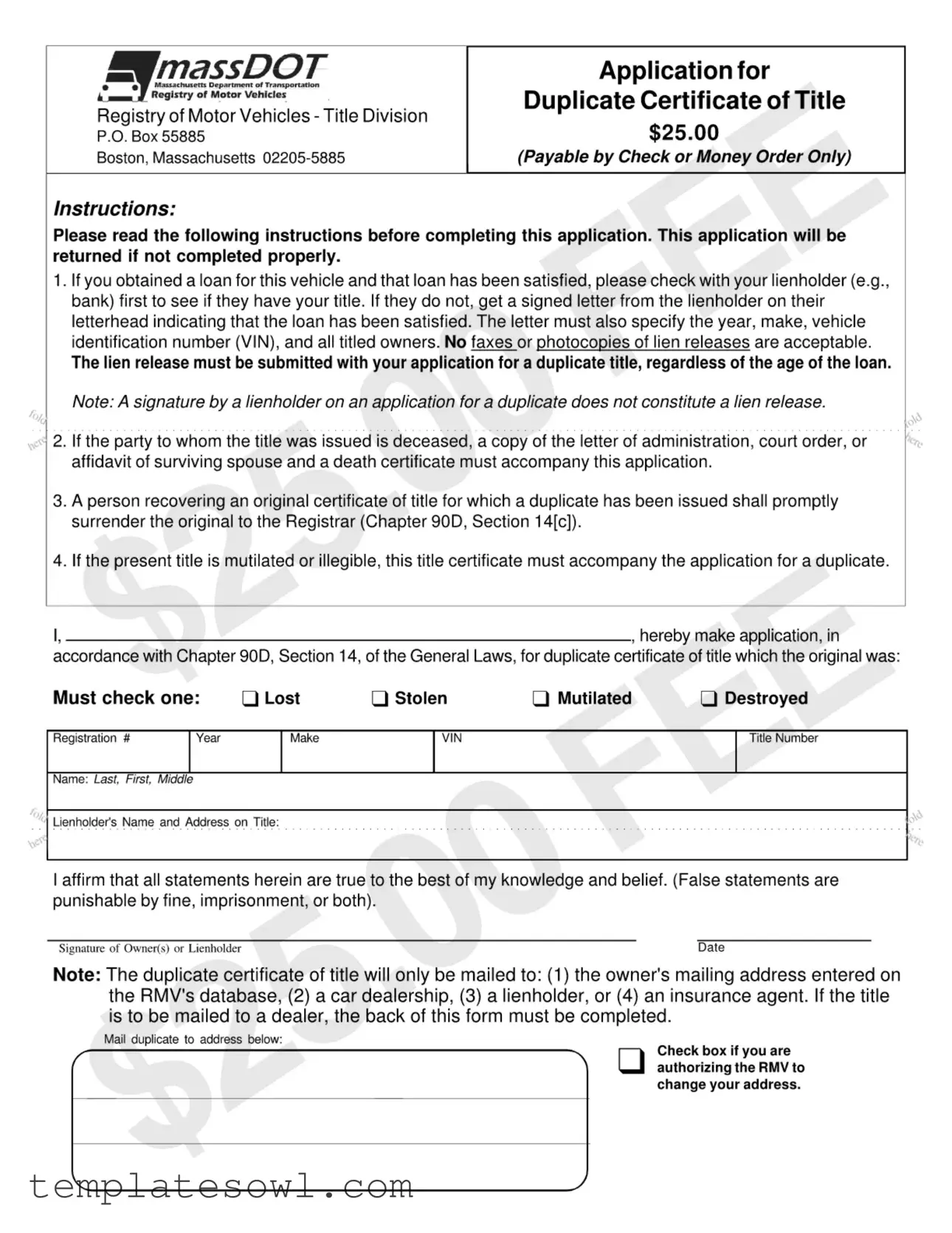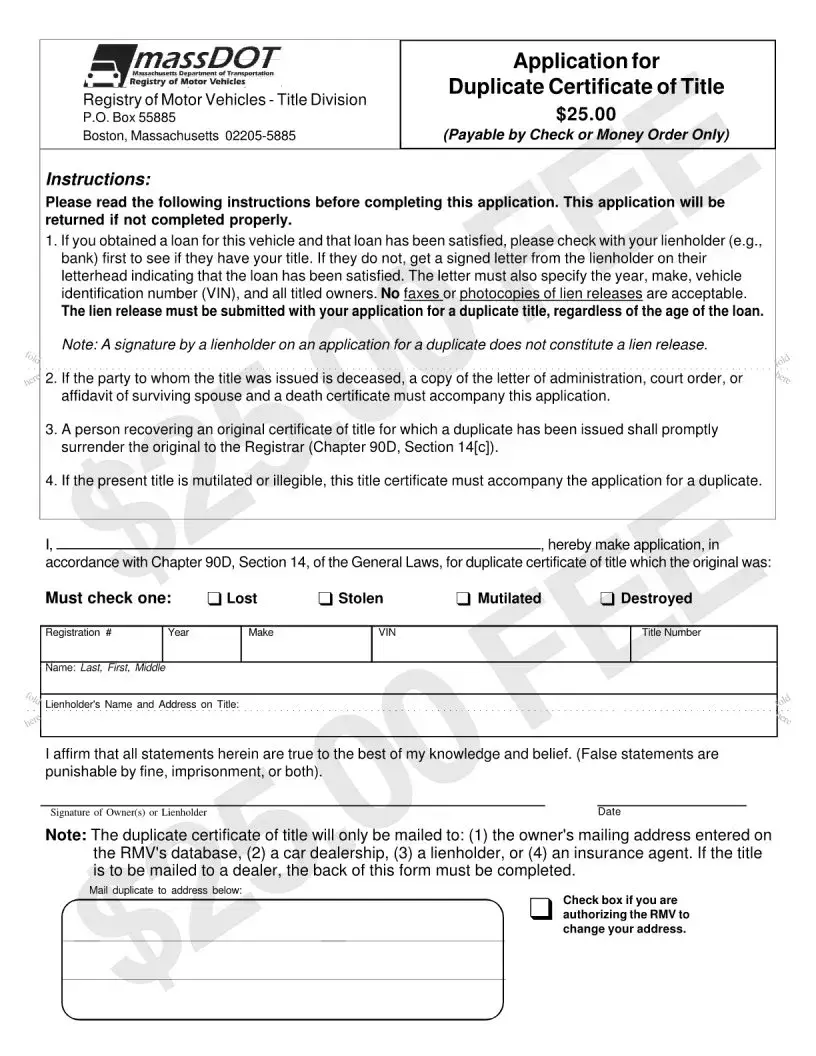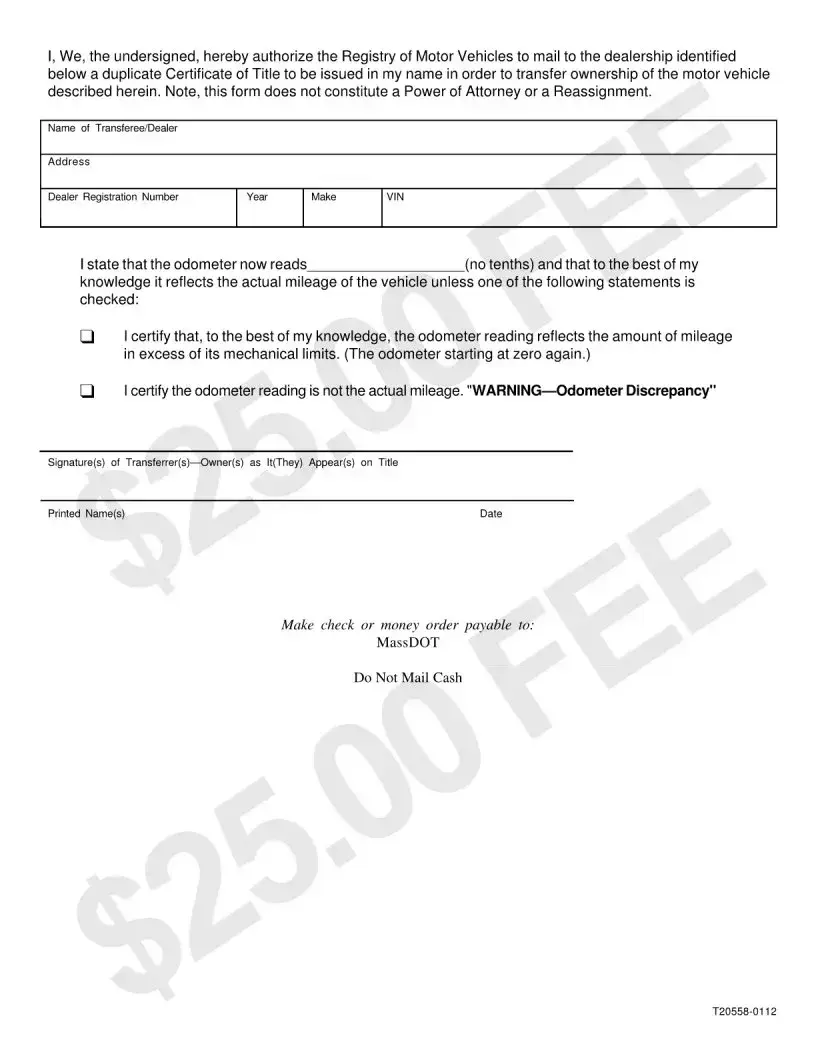Many individuals encounter issues when submitting the Application For Duplicate Certificate Of Title form. Understanding these common mistakes can help streamline the process and ensure quicker resolution.
One significant error is failing to check with the lienholder before applying. If a loan has been satisfied, the applicant must confirm that the lienholder has released the title. Without this confirmation, the application may be delayed. If the lienholder does not have the title, a signed letter on official letterhead is required, detailing the vehicle's information and confirming the lien's satisfaction.
Another common mistake occurs when applicants overlook the need for supporting documentation if a titled owner is deceased. In such cases, the applicant must provide a copy of the death certificate along with a letter of administration or a court order. Failing to include these documents leads to an incomplete application.
Submitting a mutilated or illegible title without the original is also problematic. If the current title is in poor condition, it must accompany the application for a duplicate. Not doing so can result in rejection of the application.
An additional mistake involves inaccurate or incomplete identification information. The form requires precise details such as the registration number, year, make, and Vehicle Identification Number (VIN). Errors in these fields can cause confusion and delay the process.
Furthermore, not signing the application or failing to provide the date can lead to significant delays. The signature affirms the truthfulness of the statements made in the application, and without it, the form may not be processed.
Some applicants wrongly assume that submitting a copy of a lien release or affidavit is sufficient. The Registry of Motor Vehicles only accepts original documents, meaning any faxes or photocopies will not be processed.
Lastly, applicants often neglect to specify where the duplicate title should be mailed. The form allows for mailing to specific addresses, including the owner's address on file or a dealership. Missing this detail can result in further complications and delays in obtaining the title.
By being aware of these common mistakes when completing the Application For Duplicate Certificate Of Title, applicants can lessen the likelihood of their forms being returned and ensure a smoother process.


